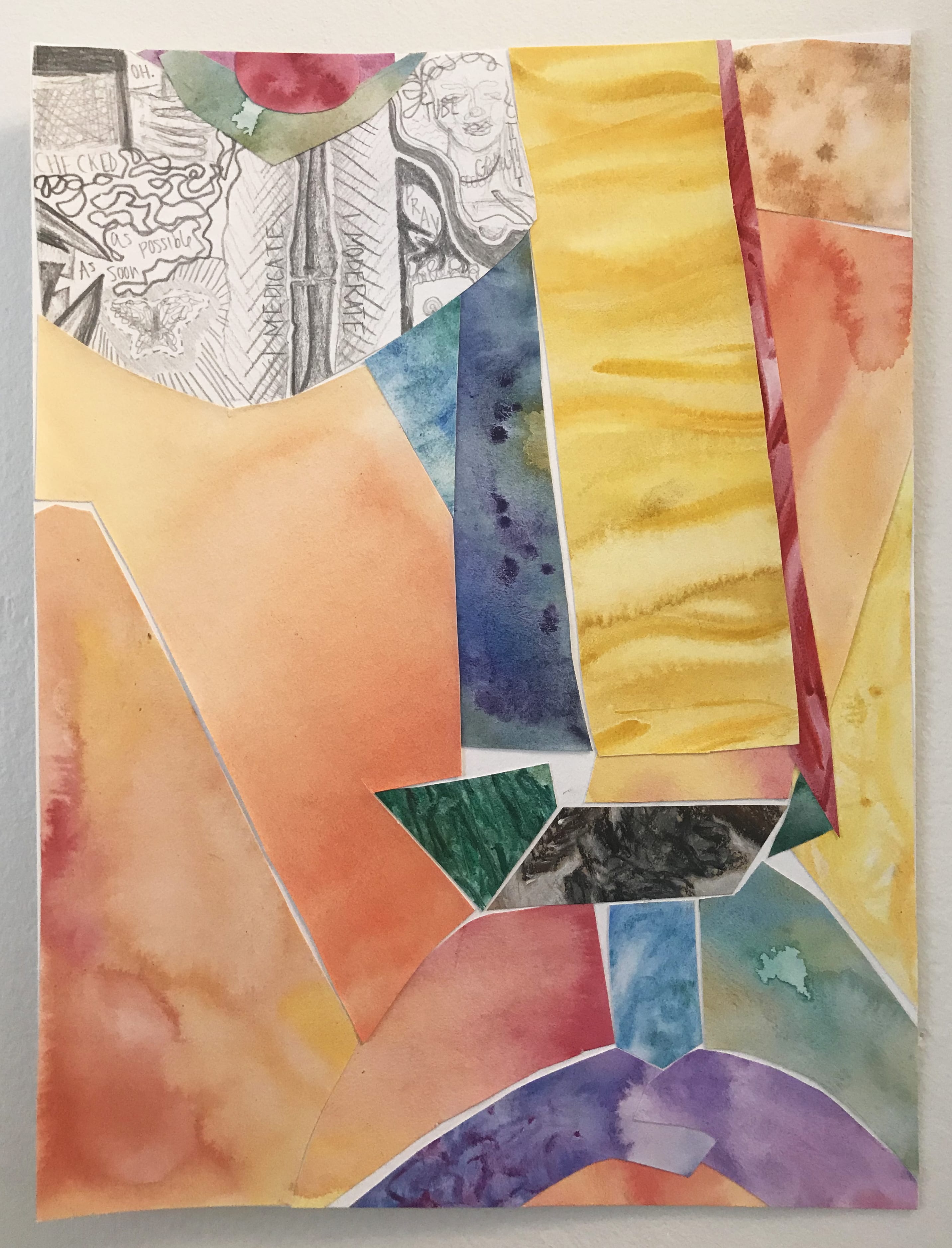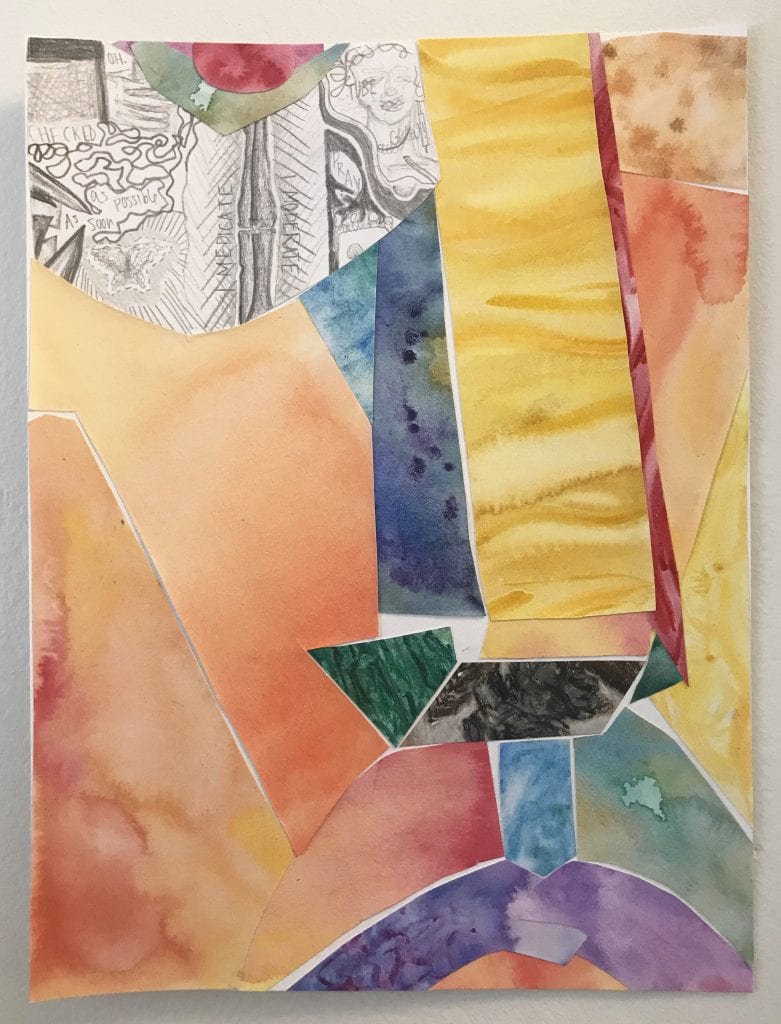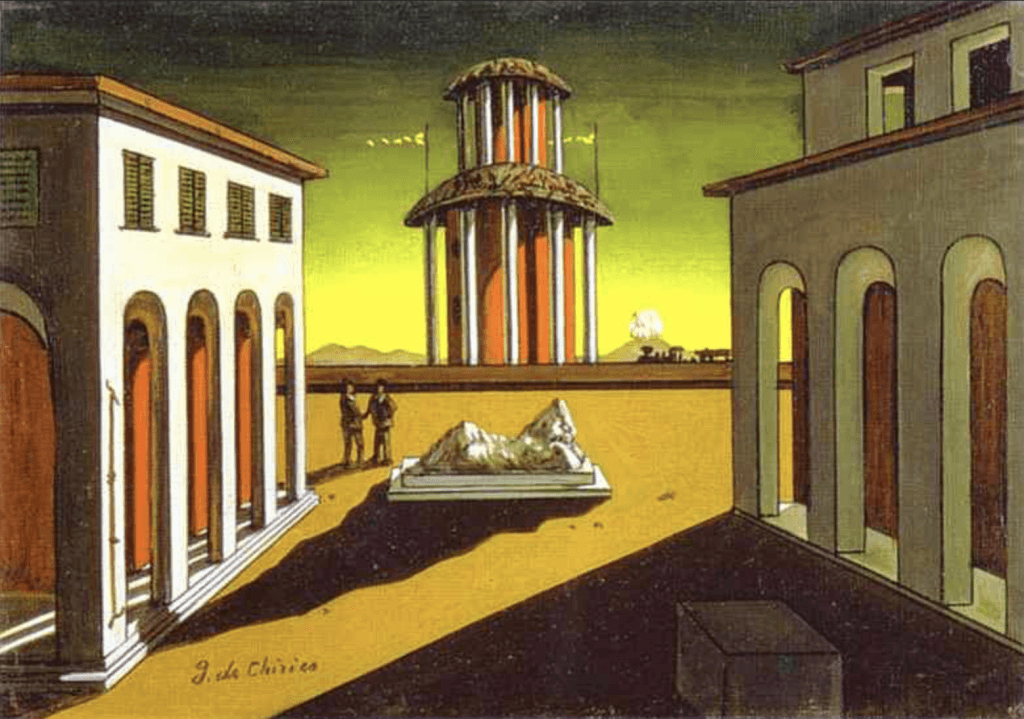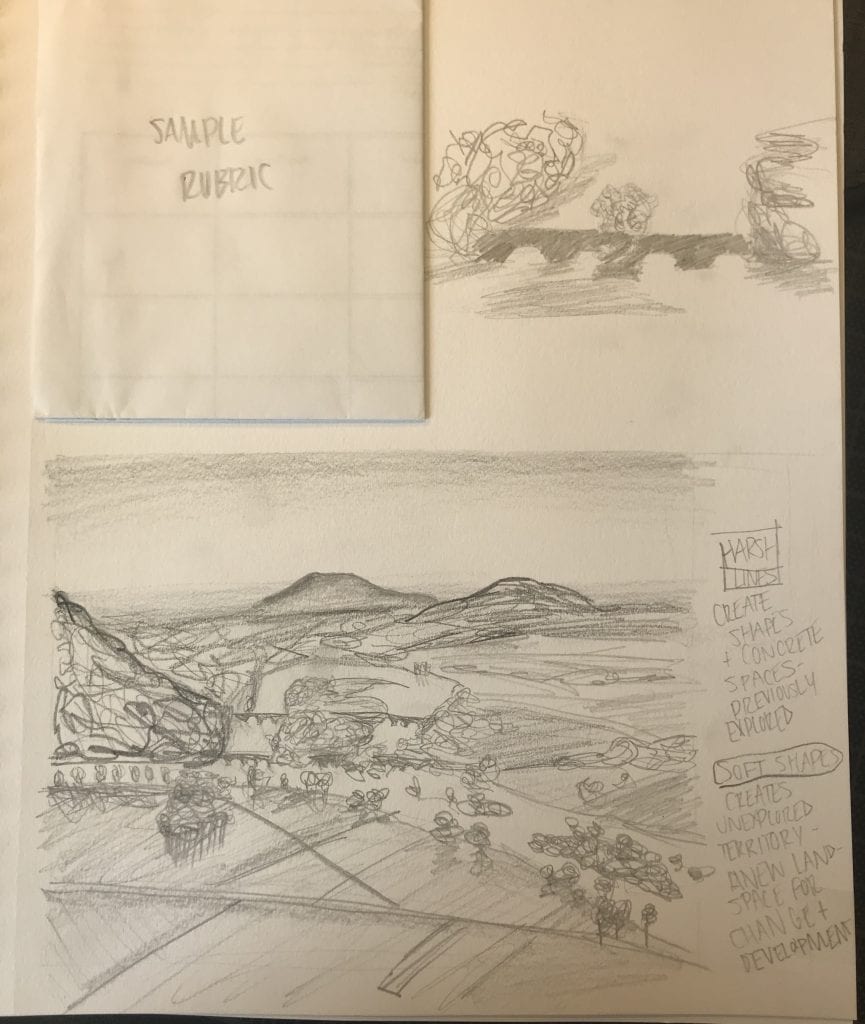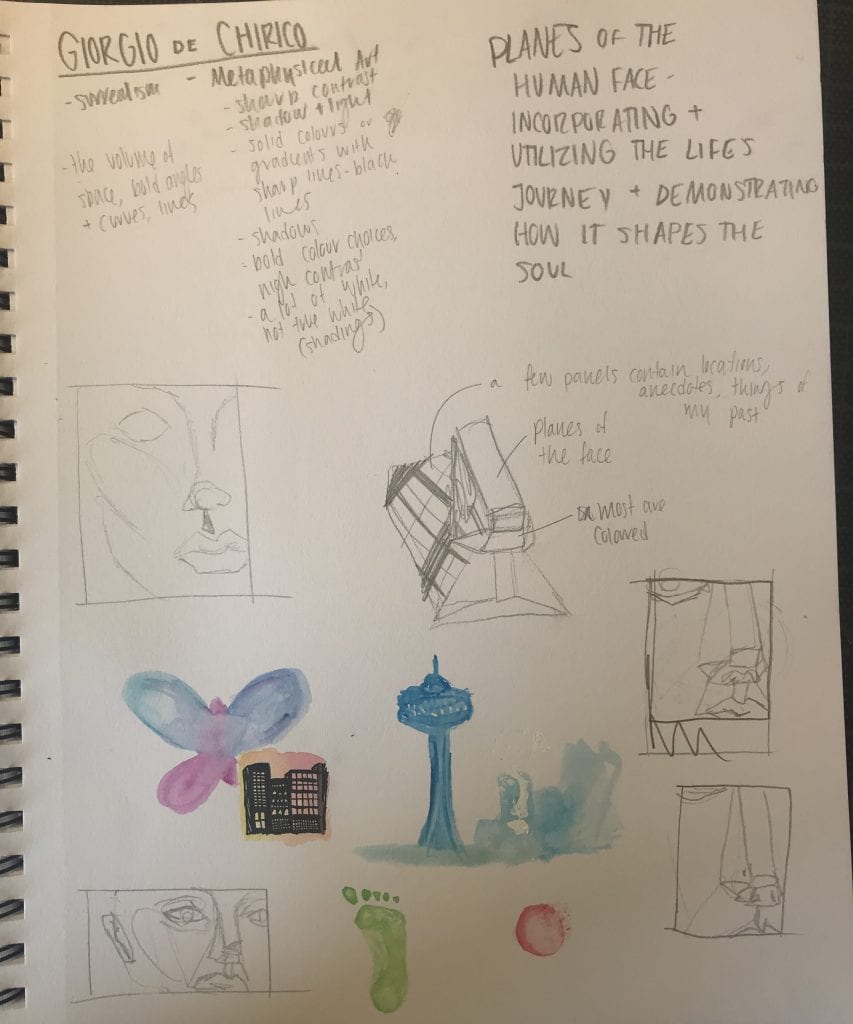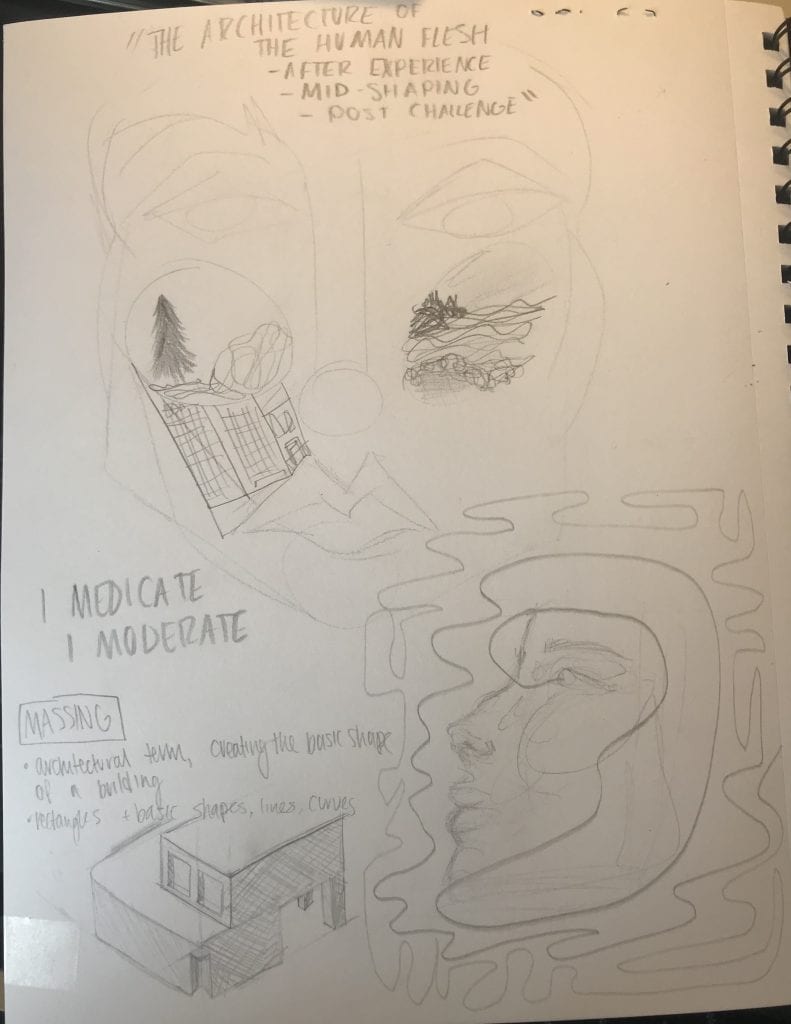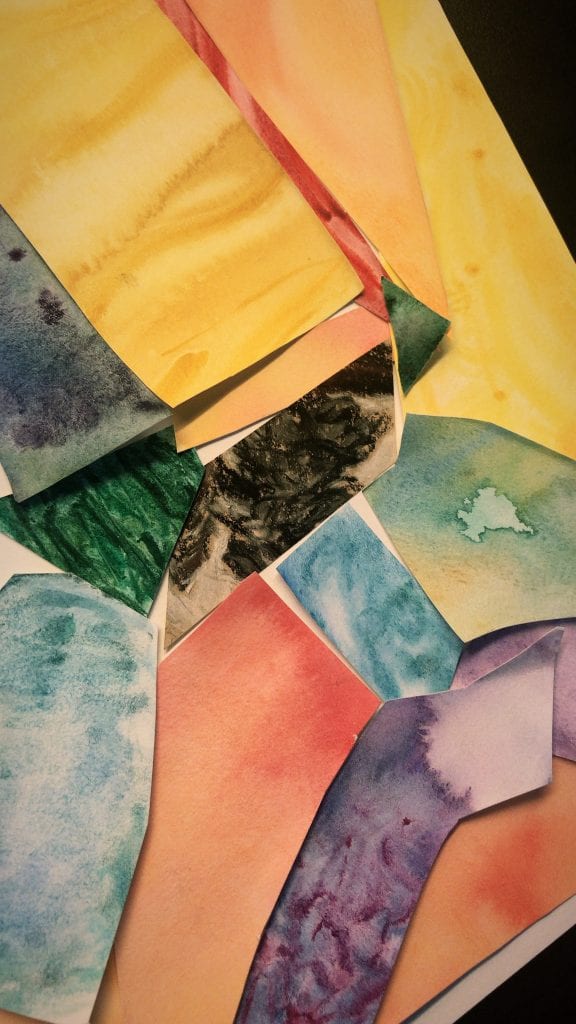The Architecture of the Human Flesh
For my interpretive self portrait, I was inspired by a piece at the Met by Stephen Hannock titled The Oxbow: After Church, After Cole, Flooded (Flooded River for the Matriarchs E. & A. Mongan), Green Light (2000).
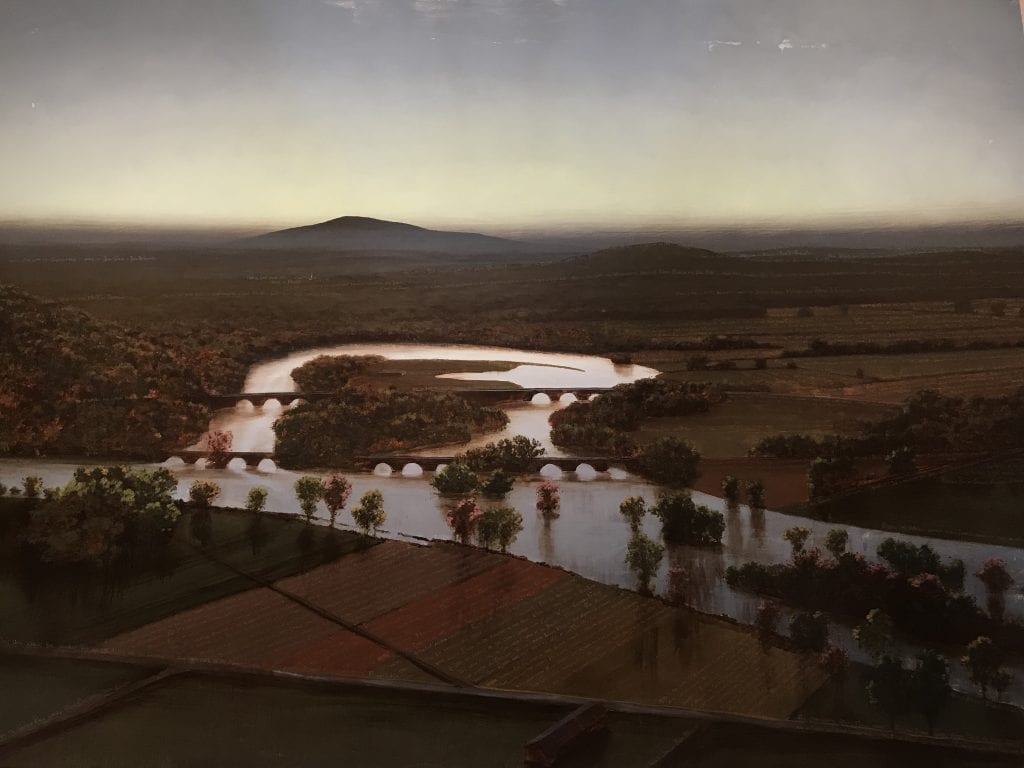
Stephen Hannock, The Oxbow: After Church, After Cole, Flooded (Flooded River for the Matriarchs E. & A. Morgan), Green Light, 2000, Acrylic, alkyd & oil glazes with collage elements on Canvas
Hannock’s massive piece is a contemporary interpretation of the scene of the Oxbow. This scene was made popular by artist Thomas Cole (as referred to in the title) in his painting View from Mount Holyoke, Northampton, Massachusetts, after a Thunderstorm – The Oxbow, 1836. Hannock highlights the scenery of this location, but focuses on adding text to the piece, incorporating memories of people and places.
After studying Hannock’s piece, I knew I wanted to create a piece that has beautiful aesthetics, but has personalized pieces, incorporating memories or places that live forever in my mind.
Then, I looked into Giorgio de Chirico, a surrealist and metaphysical artist. He created paintings using sharp contrast, bold colours and gradients, and white space to create architectural curves and lines, denoting volume and space in an interesting and unique way.
This architectural approach of creating volume differed from Hannock’s surrealist piece, and I became interested in creating a piece involving the planes of the human face by taking an architectural and stylistic approach. The planes would represent the journey of a human, being myself, and integrate elements and anecdotes of my life into them, building my figure.
Below find images of my sketchbook and process work:
